Dhoom Events Indian Wedding Glossary
Below you will find a glossary of different Indian Wedding terms and rituals.
AARTI
Aarti is a Hindu devotional ritual that involves the worship of a deity or divine figure by lighting a lamp or diya and offering flowers, incense, and other offerings. The term "aarti" comes from the Sanskrit word "arati," which means "to remove darkness."
The aarti ceremony is performed in front of a deity's idol or image and is accompanied by singing, chanting, and the ringing of bells. The performer of the aarti typically holds the lamp or diya in their hands and moves it in a circular motion, offering light to the deity.
Aartis are performed in Hindu temples and homes as a form of daily worship, as well as on special occasions such as festivals and puja ceremonies. They are considered to be a way of expressing devotion and gratitude to the deity and are thought to bring blessings and good fortune to the performer and those present.
Aartis are an important part of Hindu culture and are performed daily in many Hindu households as a way of offering devotion and seeking blessings. The aarti ceremony is considered to be a time of spiritual renewal and is often accompanied by songs, prayers, and other devotional acts.
ASHIRVAAD
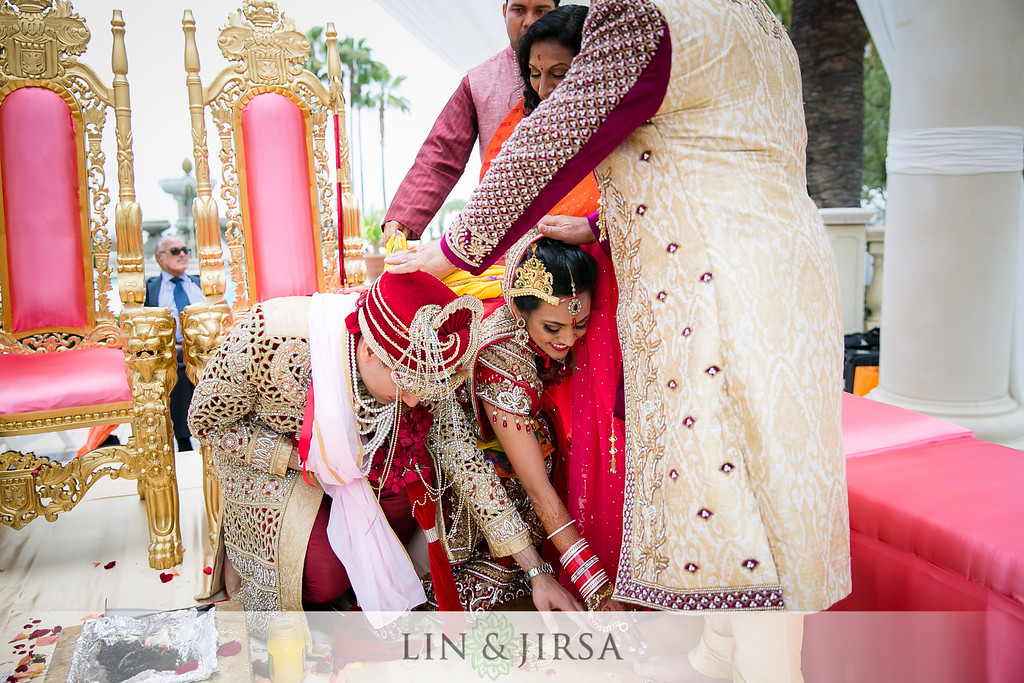
Ashirvaad is a Hindu term that refers to a blessing or a form of wishing well for someone. In the Hindu culture, it is common for elders, especially parents and grandparents, to bless and give advice to the younger generations. Ashirvaad is considered to be a symbol of love, guidance, and protection, and it is believed to bring good luck, success, and happiness to the recipient.
In the context of Hindu weddings, Ashirvaad is often given by the elders of the bride and groom's families to the newlyweds. The elders bless the couple with words of wisdom, guidance, and love and offer their best wishes for a happy and prosperous married life. The ceremony of giving Ashirvaad is considered to be an important part of the Hindu wedding celebrations, and it is a way for the families to come together and celebrate the union of the bride and groom.
In general, Ashirvaad is considered to be a positive and uplifting tradition in Hindu culture, and it is a way for the older generations to show their love and support for the younger generations. It is a symbol of the strong bond of love and support that exists within families, and it is an important part of Hindu life and culture.
AGNI
Agni is a Sanskrit word that refers to the Hindu deity of fire. In Hinduism, Agni is considered to be the god of fire and is worshipped for his role as the mediator between the human and divine worlds. Agni is believed to bring offerings of food, prayers, and other offerings made to the gods, to the gods, and is therefore considered an essential deity in Hindu worship.
In Hindu rituals and ceremonies, Agni is invoked and offerings are made to him in the form of ghee, rice, and other food items. The offerings are made by placing them in a sacred fire, which represents Agni. The smoke produced by the fire is believed to carry the offerings to the gods, and is considered to be the communication between humans and the divine.
Agni is also considered to be the witness of all vows and promises made in Hindu ceremonies, such as weddings. The presence of Agni is considered to be necessary for the sanctity of the vows, and his presence is invoked to bless and sanctify the union of the bride and groom.
In Hindu mythology, Agni is also considered to be a messenger between the gods and humans, and is said to bring the messages of the gods to humans. He is also considered to be the guardian of the sacred fire, which is believed to hold the power of creation and destruction.
Akhand Saubhagyavati
Akhand Saubhagyavati is a Hindu wedding ritual, which is a ceremony of continuous recitation of Hindu scriptures for blessings of the couple. The ceremony is performed for the well-being and good fortune of the bride and groom and for their married life together. The scriptures are recited non-stop for a certain number of hours, usually 48, by family members and friends. The bride and groom are also expected to be present during the entire ceremony, which is considered to bring good luck and happiness to the couple.
The Akhand Saubhagyavati ritual is usually performed a few days before the wedding day, and is considered an important and auspicious part of the wedding preparations. The ceremony is believed to provide the couple with the blessings of Lord Ganesha, the Hindu god of beginnings and remover of obstacles, and to provide a strong foundation for their married life.
ANTARPAAT
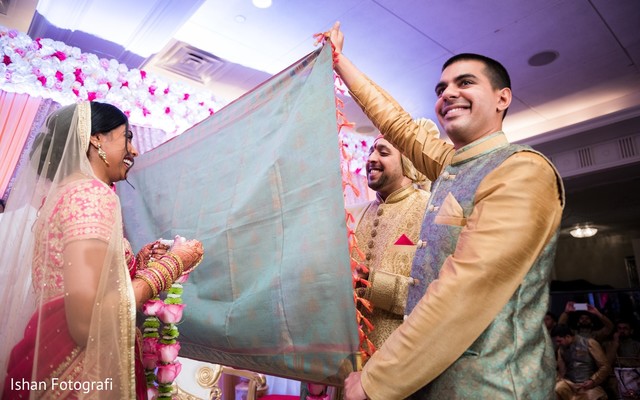
Antarpaat is a Hindu wedding ceremony that takes place during the wedding reception. It is a symbolic gesture in which the bride and groom stand in front of a veil or curtain and take blessings from their respective families.
The antarpaat ceremony is performed after the saat phere (seven vows) and is considered to be a significant moment in the wedding celebrations. The bride and groom stand on either side of the veil, and their families offer them flowers, sweets, and other gifts.
In some communities, the bride and groom exchange flower garlands as a symbol of their union. The antarpaat ceremony is seen as a symbol of the joining of two families and is an important moment of celebration and goodwill.
The antarpaat is a traditional Hindu wedding ceremony that is still widely practiced in India and other parts of South Asia. It is an important part of the wedding celebration and is a time for families to come together and offer their blessings to the newlyweds.
BARAAT
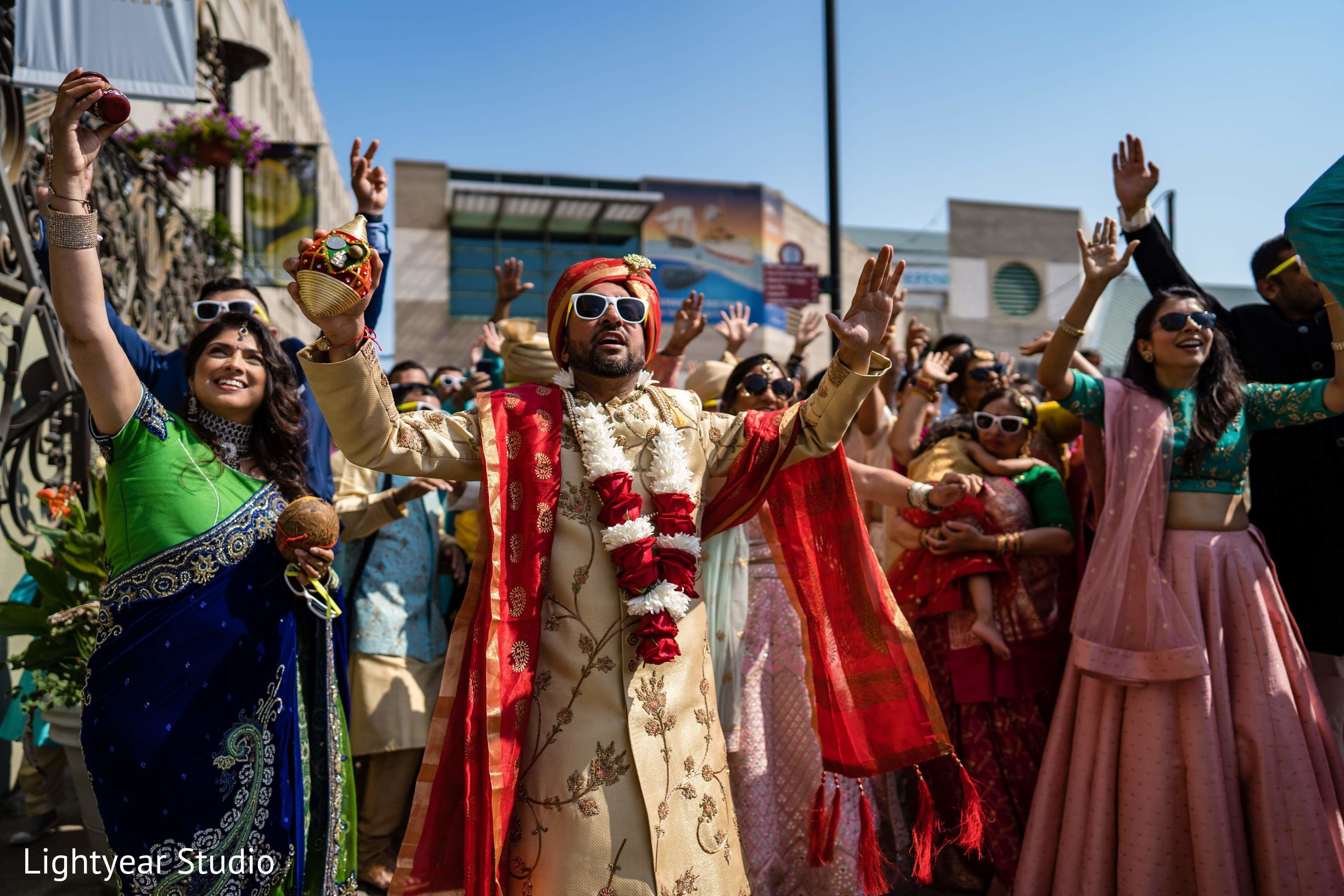
Baraat is a procession of groom and his family, friends, and musicians on horseback or on a decorated horse-drawn carriage, that takes place in Indian, Pakistani, and other South Asian weddings. The Baraat is the groom's arrival at the wedding venue, and marks the beginning of the wedding celebrations. The groom, dressed in traditional attire, rides a horse or sits on a beautifully decorated horse-drawn carriage, accompanied by his family, friends, and musicians playing traditional music, such as dhol drums.
The Baraat procession is a lively and colorful spectacle, with participants dancing and singing along the way. Upon arriving at the wedding venue, the groom is traditionally greeted by the bride's family and escorted to the wedding ceremony. The Baraat is considered an important and joyous part of the wedding celebrations, and is often a highlight of the wedding day.
BINDI

A bindi is a small, decorative dot or symbol that is traditionally worn on the forehead by Hindu women. It is often made of colored powder, paste, or jewelry and can be round, crescent-shaped, or a combination of shapes.
In Hindu culture, the bindi has a variety of meanings and is thought to bring good luck, ward off evil, and symbolize the wearer's married status. It is also considered to be an auspicious mark that signifies the third eye, or inner wisdom and insight.
The bindi has become a popular fashion accessory in many parts of the world, and is often worn by women of South Asian descent as a symbol of cultural heritage. The bindi is also worn by women of other cultures as a fashion statement, and is now available in a variety of colors, shapes, and styles.
While the bindi is traditionally a symbol of Hindu culture, it has been embraced by women of other cultures and religions and has become a popular and recognizable symbol of femininity and beauty.
DHOL PLAYER
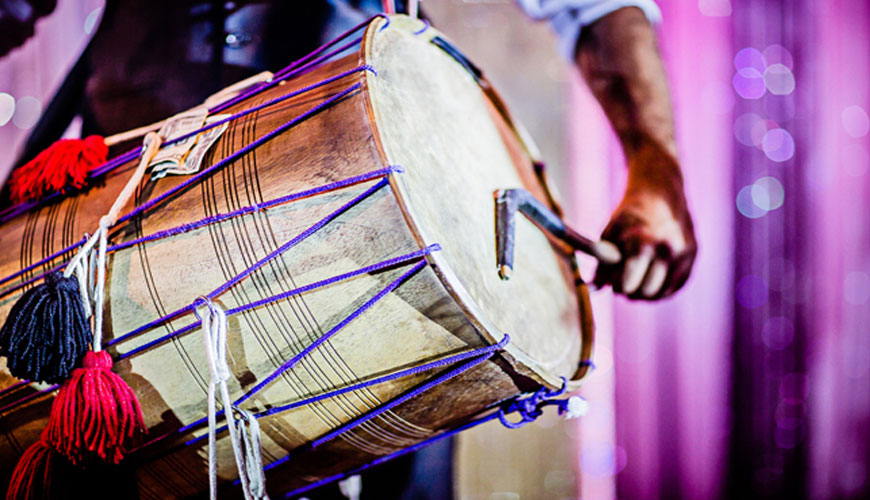
A dhol player is a musician who plays the dhol, a double-headed drum that is commonly used in Indian, Pakistani, and other South Asian music. The dhol is a percussion instrument that is played with sticks, and it is known for its distinctive, deep and rhythmic sound.
Dhol players are an important part of many traditional and cultural events in South Asia, including weddings, festivals, and religious celebrations. They provide the musical backdrop for these events, creating a lively and energetic atmosphere.
Dhol players may perform solo or as part of a larger ensemble, and they often play in sync with other percussion instruments such as the tabla or dholak. The skill of a dhol player is judged by their ability to keep the rhythm steady and play intricate patterns, and dhol playing is considered to be an art form in many South Asian communities.
In modern times, the dhol has also become popular in other forms of music, such as bhangra and fusion music, and dhol players are often sought after to perform at concerts and events. The dhol remains an important part of South Asian musical heritage and is enjoyed by people of all ages and backgrounds.
DHOLKI
A dholki is a type of hand drum that is commonly used in South Asian music, particularly in India and Pakistan. It is a cylindrical drum with one open end, and is usually played with the hands or sticks.
The dholki is most commonly used in devotional and folk music, and is an important instrument in the performance of bhajans, qawwalis, and other traditional music forms. It is also frequently used in wedding celebrations, where it provides the rhythmic foundation for the music and dancing.
In a traditional dholki ensemble, the dholki is accompanied by other percussion instruments, such as the tabla and dhol, and may also be accompanied by singing and dancing. The dholki is known for its ability to create a strong, upbeat rhythm, and its sound is an essential part of the South Asian musical landscape.
In recent years, the dholki has gained popularity in other forms of music, such as bhangra, and it is often used in contemporary music productions to add a touch of South Asian flavor to the music. Despite this, the dholki remains an important part of South Asian musical tradition and is a beloved instrument in many communities.
DOLI
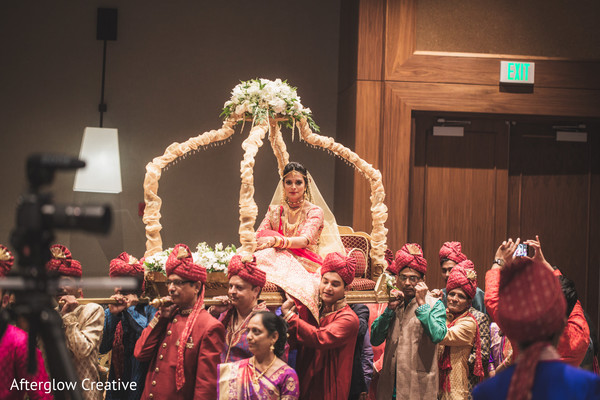
A doli is a traditional wedding procession in Hindu culture, where the bride is carried to her husband's home after the wedding ceremony. The term "doli" comes from the Hindi word "doli," which means "palanquin."
The doli procession is a colorful and joyous event, with the bride being carried in a decorated palanquin or sedan chair by her relatives or friends. The bride is accompanied by her family members and friends, who sing and dance along the way. The groom's family members also accompany the bride and welcome her to their home with traditional customs and rituals.
The doli procession is an important part of the Hindu wedding tradition and symbolizes the bride's departure from her family and her arrival at her new home. It is considered to be a time of celebration, joy, and happiness and is a way for the bride and groom to start their new life together.
In modern times, the traditional doli procession has evolved and is often replaced by more elaborate and elaborate wedding processions, with the bride and groom being carried in decorated cars or on horseback. Nevertheless, the doli procession remains an important part of Hindu wedding celebrations and continues to be a time of joy and celebration for families and communities.
GANESH POOJA
Ganesh Pooja is a Hindu ritual that involves worshiping Lord Ganesha, the Hindu god of beginnings and remover of obstacles. The Ganesh Pooja is performed before starting any new venture, undertaking a journey, or beginning a new project, as Lord Ganesha is believed to provide blessings and remove any obstacles that may arise.
The Ganesh Pooja can be performed at home or at a temple, and typically involves offering flowers, incense, and sweets to Lord Ganesha. A mantra or prayer is also recited, asking Lord Ganesha for his blessings and guidance. The Pooja is usually performed by the head of the household or by a priest, and may be attended by family members and friends.
In the context of a wedding, the Ganesh Pooja is usually performed before the start of the wedding ceremonies, to seek the blessings of Lord Ganesha for a smooth and successful wedding. The Ganesh Pooja is considered an important and auspicious part of the wedding preparations, and is believed to bring good luck, prosperity, and happiness to the bride and groom.
GRAHAPRAVESH
Grahapravesh, also known as Grihapravesh or Housewarming, is a Hindu ceremony that marks the first entry of a newly married couple into their new home. It is a significant event in the lives of the couple and is typically celebrated with much fanfare and joy.
The Grahapravesh ceremony is usually held on an auspicious date and time, determined by the couple's astrologer. During the ceremony, the couple is welcomed into their new home by friends and family, who bless them and the home with sacred rice, flowers, and other offerings.
The couple then performs a puja (a Hindu prayer ceremony) in front of the main door of the house, offering prayers to the gods and seeking their blessings for a happy and prosperous life in their new home. This is followed by a festive meal and dancing, and the couple is often presented with gifts and blessings by their loved ones.
Grahapravesh is considered an important event in Hindu culture, as it symbolizes the start of a new life for the couple and is seen as a time for joy, hope, and happiness. The ceremony is usually performed with great care and attention to detail, and is an occasion for families to come together and celebrate the beginning of a new chapter in the lives of the couple.
HALDI CEREMONY
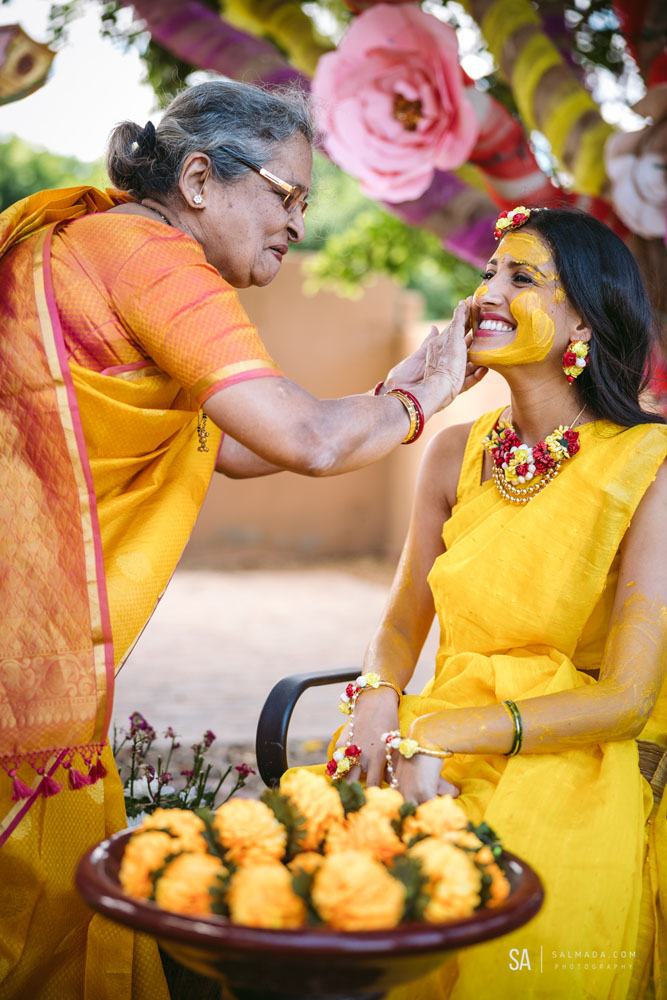
Haldi ceremony is a pre-wedding Hindu tradition from India, held a few days before the wedding day. During the Haldi ceremony, a mixture of turmeric, sandalwood, and other traditional ingredients is applied to the bride and groom's skin as a symbol of good luck and as a protection against evil. The Haldi ceremony is usually a fun and lively event, attended by friends and family of the bride and groom.
The Haldi ceremony is considered a significant and auspicious part of the wedding preparations in India, and is believed to bring good luck, prosperity, and happiness to the couple. The mixture applied to the bride and groom is also believed to have skin-brightening properties and is said to enhance the natural glow of the skin. The Haldi ceremony is often followed by a shower, where the bride and groom wash off the Haldi paste, leaving their skin refreshed and radiant.
HASTA MELAP
Hasta Melap is a Hindu ritual performed during a wedding ceremony where the bride and groom's hands are tied together. The word "Hasta Melap" comes from two Sanskrit words "hasta" meaning "hand" and "melap" meaning "to tie." This ritual symbolizes the union of the bride and groom and signifies their commitment to each other.
During the Hasta Melap ceremony, the bride and groom's hands are tied together using a sacred thread or rope, and the priest recites mantras and blessings for the couple. This is an important moment in the wedding ceremony as it signifies the formal union of the bride and groom. The couple then walks around a sacred fire, taking seven vows and promising to love and support each other for life.
The Hasta Melap ceremony is a significant part of the Hindu wedding and is a time for the bride and groom to express their love and commitment to each other. The tying of the hands together symbolizes their unity, and the prayers and blessings they receive from the priest and their families ensure a long and happy life together.
Overall, the Hasta Melap ceremony is a beautiful and meaningful moment in the Hindu wedding, and it is an important part of the wedding celebrations, symbolizing the start of a new journey for the bride and groom as they embark on their life together.
HAVAN KUND
A Havan Kund is a type of fire pit that is used in Hindu rituals and ceremonies, particularly in the performance of havans or yajnas. A Havan Kund is typically made of brass, copper, or other metals, and is shaped like a shallow dish or bowl.
During a havan, offerings such as ghee, rice, sandalwood, and other sacred materials are placed in the Havan Kund and set on fire, while mantras and prayers are recited by the priests or other participants. The smoke and ash generated by the fire are believed to purify the environment and carry the prayers and offerings to the gods.
The Havan Kund is considered a very important part of Hindu rituals, as it serves as the focal point for the offerings and prayers. The size and shape of the Havan Kund can vary depending on the specific ritual or ceremony, but it is typically made large enough to accommodate a moderate-sized fire.
In addition to its use in religious rituals, the Havan Kund is also considered to have a number of health benefits, as the smoke produced during a havan is said to purify the air and help to neutralize harmful pollutants. Today, many people in India and other countries continue to use the Havan Kund in traditional Hindu rituals and ceremonies, as a symbol of their spiritual heritage and cultural identity.
JAGO
Jago is a Hindu wedding ritual that is typically performed the night before the wedding day. The Jago ceremony is a pre-wedding celebration that is held at the bride's home and is meant to awaken the bride and groom for the wedding festivities that are to come.
The Jago ceremony is usually a lively and energetic affair, with friends and family members singing and dancing to celebrate the upcoming wedding. The bride and groom are also typically given gifts and blessings by their close relatives during the Jago ceremony.
In some communities, the Jago ceremony may also include religious rituals, such as the lighting of lamps, the offering of prayers, and the recitation of sacred hymns. The Jago ceremony is considered to be an important part of the Hindu wedding tradition, and is meant to set the tone for the wedding day and to bring good luck and blessings to the bride and groom.
The Jago ceremony is typically a private and intimate affair, with only close friends and family members in attendance. It is an opportunity for the bride and groom to bond with their relatives and to prepare themselves mentally and emotionally for the wedding day.
JAIMALA
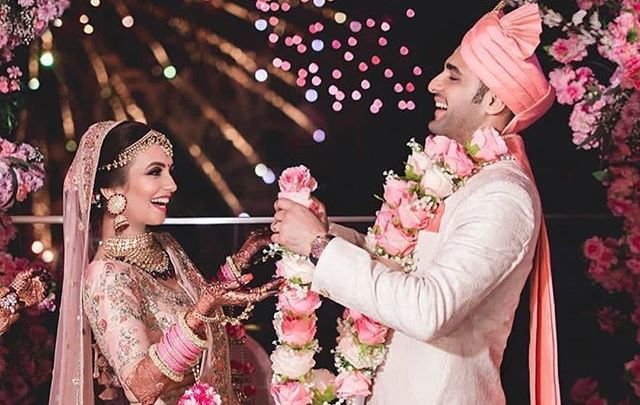
Jaimala is a Hindu wedding tradition in which the bride and groom exchange flower garlands, symbolizing their acceptance of each other as life partners. It is considered to be a very important and auspicious moment in the Hindu wedding ceremony, and the exchange of Jaimala marks the formal engagement of the bride and groom.
The Jaimala ceremony is usually performed before the actual wedding ceremony, and it involves the bride and groom exchanging garlands made of flowers, usually marigolds, while the guests shower them with flower petals. The garlands symbolize the acceptance of each other as life partners, and the exchange of Jaimala marks the start of the wedding celebrations.
In some Hindu communities, the Jaimala ceremony is accompanied by singing and music, and the bride and groom may also perform a small dance together. This ceremony is an opportunity for the bride and groom to show their love and affection for each other, and it sets the tone for the rest of the wedding celebrations.
Overall, the Jaimala ceremony is a significant and meaningful moment in the Hindu wedding, and it is considered to be an important step in the journey of the couple as they prepare to start a new life together.
KANSAR BHAKSHA
Kansar Bhaksha is a Hindu ritual performed on the day of a wedding ceremony in some parts of India. In this ritual, the bride and groom are offered sweet dishes made of a mixture of wheat flour, ghee, and sugar, which is known as Kansar. The sweet dish is symbolically offered to the deity as a sign of gratitude and for seeking blessings for a happy and prosperous married life.
In some communities, the bride and groom are also required to feed each other with the Kansar as a way of demonstrating their love and affection towards each other. The act of feeding each other also signifies their commitment to take care of each other and to support each other in times of need.
The Kansar Bhaksha ceremony is an important part of the Hindu wedding celebrations and is a time for the bride and groom to receive blessings and well wishes from their families and friends. The sweet dish is believed to bring good luck, prosperity, and happiness to the couple's life, and it is a symbol of their love and commitment to each other.
KANYADAAN
Kanyadaan is a Hindu wedding ritual in which the father of the bride offers her hand in marriage to the groom. This ritual is considered one of the most important parts of the Hindu wedding ceremony, and is seen as a symbolic transfer of the bride from the control of her father to that of her husband.
In the Kanyadaan ritual, the father of the bride holds the hand of the bride and offers it to the groom. The groom accepts the hand and places it on his own head, signifying that he is accepting the bride into his care and protection.
Kanyadaan is considered a selfless act of love and devotion by the bride's father, as he is giving away his daughter to another man. The ritual is meant to represent the willingness of the father to sacrifice his own happiness for the happiness and well-being of his daughter.
Kanyadaan is performed in the presence of witnesses, such as close family members and friends, and is accompanied by prayers, mantras, and other Hindu wedding customs. The significance of Kanyadaan is deeply rooted in Hindu tradition and culture, and is seen as a symbol of the love and sacrifice that is the foundation of any strong and successful marriage.
MANDAP
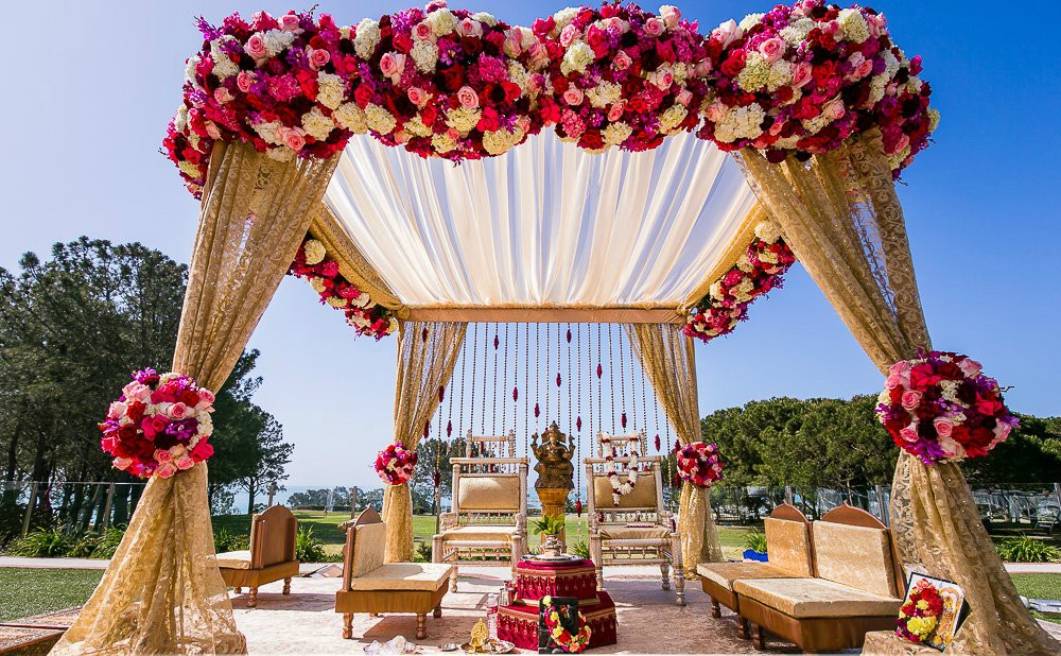
A mandap is a ceremonial platform used in Hindu weddings and other religious ceremonies. It is a covered structure, typically made of wood or cloth, that serves as the central point of the wedding ceremony. The mandap is where the bride and groom exchange their vows and take their seven vows, known as the "saat phere." The mandap is also the location for other key wedding rituals, such as the lighting of the sacred fire (havan) and the exchange of flower garlands between the bride and groom (jaimala). The mandap is decorated with flowers, lights, and other ornaments, and is considered a sacred space for the wedding ceremony. The mandap is an important symbol of the union between the bride and groom, and represents the coming together of two families and communities.
MANGALSUTRA
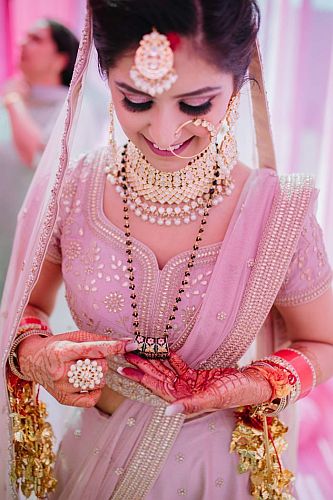
Mangalsutra is a traditional Hindu symbol of marriage worn by married women in India and other South Asian countries. It is a necklace that is usually made of black or yellow beads, with a pendant that represents the union of the bride and groom.
The Mangalsutra is considered an important symbol of the marriage and is worn by the bride throughout her married life. It is typically put on by the groom during the wedding ceremony, signifying the couple's commitment to each other and their union.
In Hindu culture, the Mangalsutra is also considered a talisman that provides protection and brings good fortune to the marriage. The design and style of the Mangalsutra may vary depending on regional and family customs, but it remains an important symbol of the wedding and the bond between the bride and groom.
MEHENDI CEREMONY
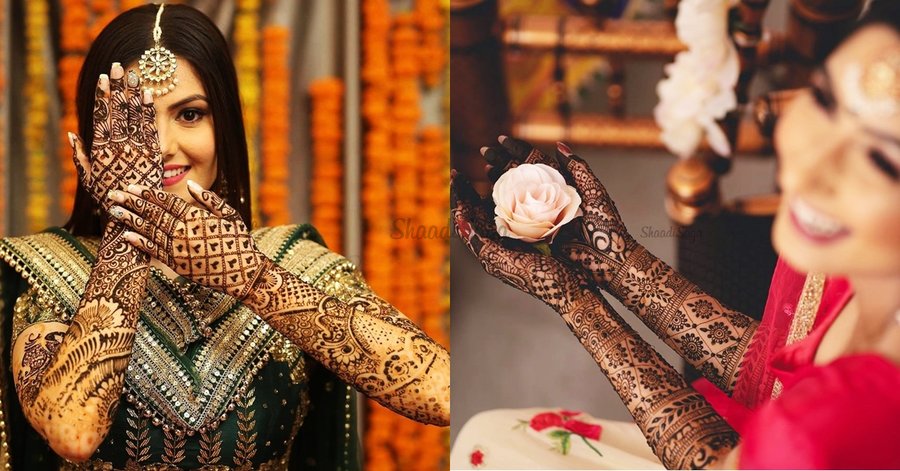
Mehndi is a pre-wedding Hindu tradition from India, in which intricate henna designs are applied to the hands and feet of the bride. The Mehndi ceremony is usually held a few days before the wedding and is a celebration of the bride's beauty and good fortune. The ceremony is often accompanied by music, singing, and dancing, and is attended by the bride's female friends and family members. The Mehndi ceremony is considered an auspicious event and is believed to bring good luck to the bride and groom. The intricate henna designs can take several hours to apply, and are meant to last for several days, until they eventually fade away.
MILNI
Milni is a Hindu wedding ritual that marks the formal introduction of the groom's family to the bride's family. The Milni ceremony is typically held just before the wedding ceremony and is an important part of the pre-wedding celebrations.
In the Milni ceremony, the groom and his family members are welcomed by the bride's family at the wedding venue. The two families exchange garlands and gifts as a symbol of their mutual respect and affection. The exchange of garlands is often accompanied by the singing of wedding songs and the playing of musical instruments.
The Milni ceremony is an opportunity for the groom's family and the bride's family to formally acknowledge each other and to demonstrate their commitment to the marriage. It is also a time for the two families to come together and to share in the excitement and joy of the wedding day.
The Milni ceremony is considered to be an important part of the Hindu wedding tradition and is typically performed in a joyous and celebratory manner. It is a time for the bride and groom to bond with their relatives and to begin the process of becoming a part of each other's families.
NIKAH
Nikah is an Islamic wedding ceremony that marks the formal union of a bride and groom in marriage. The Nikah ceremony is a religious event that is performed in the presence of witnesses and is conducted by a religious official, such as an imam or a religious scholar.
In the Nikah ceremony, the bride and groom make public declarations of their intention to marry and to enter into a binding contractual agreement. The bride and groom are required to sign a written marriage contract, which specifies the rights and responsibilities of each party and the conditions of the marriage.
The Nikah ceremony is typically performed in a mosque, but may also be held in a community center, a private home, or another suitable location. The bride and groom are required to be accompanied by witnesses who are able to attest to the validity of the marriage.
The Nikah ceremony is considered to be an important religious event in Islam and is typically performed in a serious and solemn manner. The wedding celebrations following the Nikah ceremony may include feasting, dancing, and other festivities, but the Nikah ceremony itself is considered to be a religious obligation that must be fulfilled in order for the marriage to be considered valid in the eyes of Islam.
PAATH
Paath is a Sanskrit word that refers to the recitation of sacred text or prayers in Hinduism. The word Paath is used to describe the ritual of reading and chanting specific portions of Hindu scriptures, such as the Vedas, Bhagavad Gita, or Ramayana.
Paath can be performed individually or in a group setting, and is often done as a form of devotion and worship. The purpose of the Paath is to attain blessings and positive energy from the divine, and to purify the mind and soul.
In Hindu tradition, Paath is performed for a variety of reasons, including for spiritual upliftment, for protection from negative influences, for good health and prosperity, or as an offering to the gods. Paath is typically conducted under the guidance of a knowledgeable priest or teacher who is familiar with the text and the proper pronunciation and recitation methods.
Paath is considered an important part of Hindu spirituality, and is performed in homes, temples, and other places of worship. It is a means of connecting with the divine and expressing one's devotion and respect for the Hindu tradition.
PANCHANG
Panchang is a Hindu astronomical and astrological almanac that provides information about the position of celestial bodies and auspicious times for various rituals and ceremonies. The word "Panchang" is derived from "panch," which means five, and "ang," which means parts. The five parts of the Panchang are Tithi (lunar day), Nakshatra (lunar mansion), Yoga (the position of the sun and moon), Karana (half of a Tithi), and Var (day of the week).
The Panchang is used as a reference for timing important life events such as weddings, naming ceremonies, and other religious observances. It also provides information about the movement of celestial bodies, such as the sun, moon, and planets, which is important for astrological predictions and calculations.
The Panchang is compiled based on the Hindu calendar, which is a lunar calendar, and takes into account the position of the moon and other celestial bodies in the sky. It is a useful tool for determining auspicious times for various rituals and ceremonies and is widely used in India and other parts of South Asia.
In modern times, Panchang information is widely available in digital form, such as in smartphone apps, websites, and other digital resources, making it easy for people to access this information and use it in their daily lives.
PITHI CEREMONY
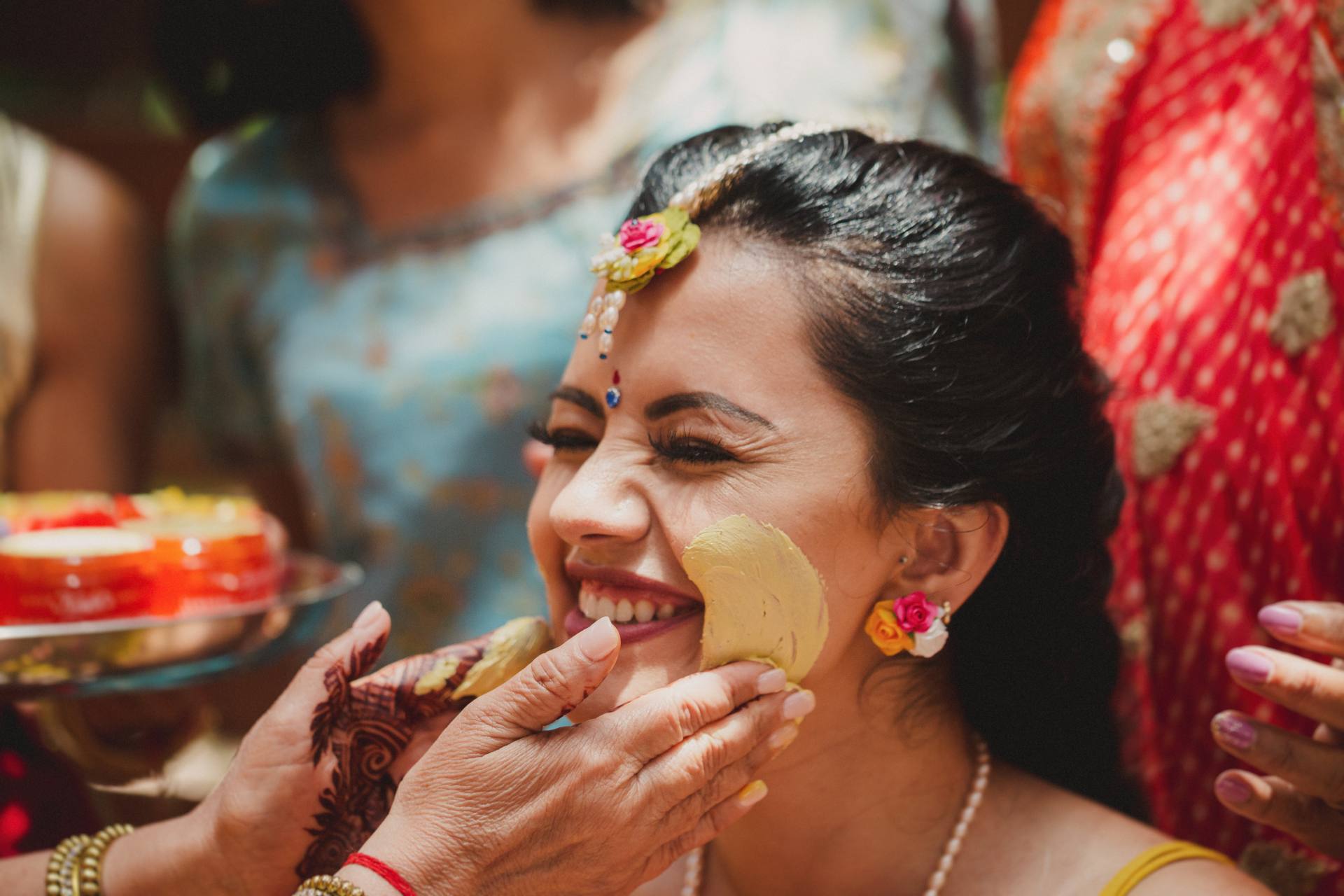
Pithi ceremony is a pre-wedding tradition in Indian and Pakistani weddings, where a mixture of turmeric, sandalwood, and other natural ingredients is applied to the bride and groom's skin to enhance their natural glow and bring good luck. The Pithi ceremony is usually held a few days before the wedding day and is considered an important and auspicious part of the wedding preparations.
The Pithi ceremony is performed by the bride and groom's close family members and friends, who take turns applying the Pithi mixture to the bride and groom's skin. The mixture is believed to have skin-brightening properties and is said to enhance the natural glow of the skin. The Pithi ceremony is often followed by a shower, where the bride and groom wash off the Pithi mixture, leaving their skin refreshed and radiant.
The Pithi ceremony is a fun and lively event, attended by friends and family of the bride and groom. It is a time for everyone to come together, celebrate, and show their love and support for the couple as they embark on a new journey together.
ROKA CERMONY
Roka ceremony is a pre-wedding Hindu tradition from India, usually performed before the actual wedding ceremony. It is a simple and informal event, typically held at the bride or groom's home, where both families come together and formally announce their intention to have the couple marry. During the Roka ceremony, the families exchange gifts, share sweets, and offer their blessings to the couple. It is also an opportunity for both families to meet each other and get to know each other better. This ceremony is considered an important step in the wedding process and marks the beginning of the formal wedding preparations.
SAAT PHERE
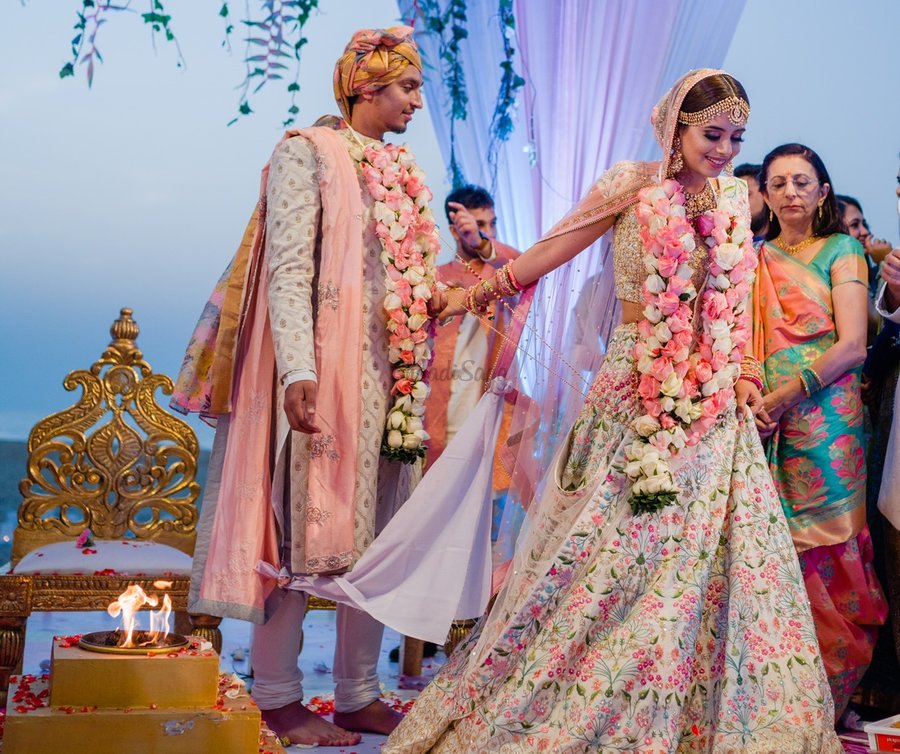
Saat Phere is a Hindu wedding ritual that involves taking seven vows or promises by the bride and groom. The seven vows, or Saat Phere, symbolize the couple's commitment to each other and to their relationship, and are considered to be the foundation of their life together.
In the Saat Phere ceremony, the bride and groom take seven rounds around a sacred fire, each time making a vow or promise to each other. The seven vows usually include promises to love and care for each other, to support each other in times of need, to be honest and truthful with each other, and to fulfill each other's dreams and desires.
The Saat Phere ceremony is an important part of the Hindu wedding tradition, and is considered to be a symbol of the couple's commitment to each other and to their life together. The ceremony is performed in the presence of family and friends, who witness the couple's promises to each other and offer their blessings and support.
The Saat Phere ceremony is usually performed after the Varmala ceremony, and is followed by other important rituals, such as the tying of the mangalsutra, the exchange of rings, and the seven vows. The Saat Phere ceremony is considered to be a joyful and auspicious event, and is a time of celebration and happiness for the bride, groom, and their families.
SAGAII
Sagaai is a pre-wedding Hindu tradition from India that marks the official engagement of the couple. It is a small and intimate ceremony, usually held at the bride's home, where the families of the bride and groom exchange rings and formally agree to the marriage. The ceremony is usually followed by a meal and celebration with family and close friends. The Sagaai ceremony signifies the formal commitment of the couple to each other and is considered an important step in the wedding process. It is typically held a few months before the actual wedding ceremony.
SANGEET
Sangeet is a pre-wedding celebration in Indian culture, traditionally held the night before the wedding day. It is a joyful and festive event that is often hosted by the bride's family, and is attended by both the bride and groom's families and friends. Sangeet is a musical and dance celebration, featuring singing, dancing, and other performances by the bride, groom, and their families and friends. It is a time for everyone to come together, have fun, and get to know each other better before the wedding day. The Sangeet ceremony is considered an important part of the wedding celebrations in Indian culture, and is often an elaborate and lavish event.
SAPTAPADI
Saptapadi is a Sanskrit word that translates to "seven steps" or "seven footprints". It is a key ritual in Hindu weddings, where the bride and groom take seven vows or promises to each other, symbolizing their commitment to each other for life. During the Saptapadi ceremony, the bride and groom take seven steps together around a sacred fire, with each step representing a promise made to each other. The seven vows made during the Saptapadi ceremony are:
We promise to love and respect each other.
We promise to share our joys and sorrows.
We promise to support each other through life's challenges.
We promise to maintain a peaceful home.
We promise to be faithful and supportive partners.
We promise to care for each other in sickness and health.
We promise to be lifelong companions.
The Saptapadi ceremony is considered an important and sacred part of the Hindu wedding, and signifies the formal union of the bride and groom as husband and wife.
SINDOOR
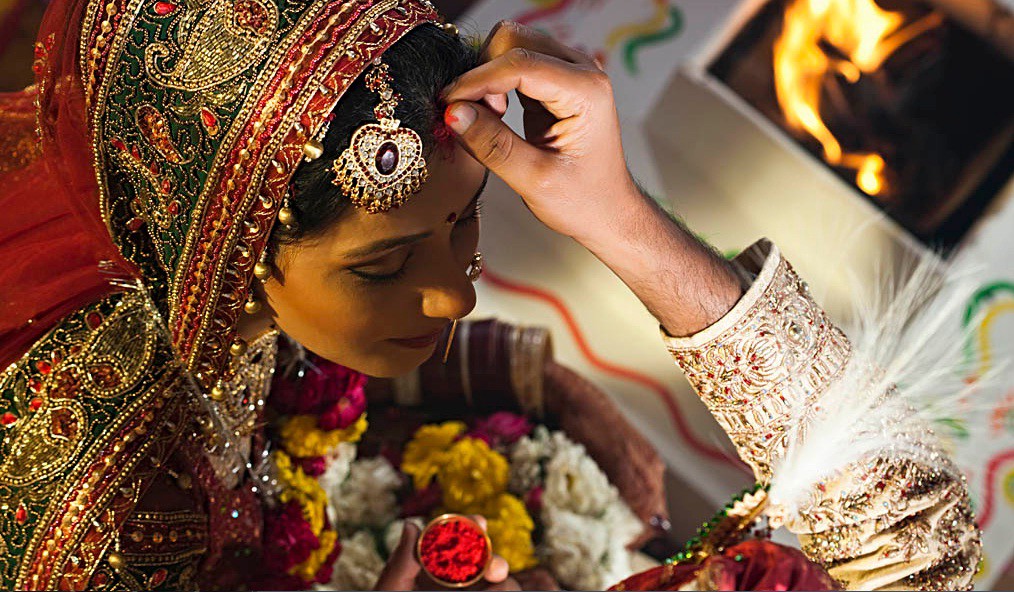
Sindoor is a red or orange-red powder or vermilion used by Hindu women as a cosmetic to adorn the parting in their hair. It is also considered an important symbol of a woman's marital status and is worn by married women in India and other countries with a significant Hindu population.
In Hindu tradition, sindoor is applied by a woman after her wedding ceremony to signify that she is now married and is considered the property of her husband. The sindoor is applied to the hair parting in the center of the head and is considered a sign of a woman's devotion to her husband and her commitment to their marriage.
Sindoor is also considered to be a symbol of the goddess Parvati, who is worshipped as the ideal wife and the embodiment of femininity and marital bliss. The wearing of sindoor is therefore considered to bring good luck and blessings to the married couple and is seen as a symbol of the woman's devotion to her husband and her role as a wife.
In some communities, sindoor is also applied to the forehead as a symbol of religious devotion and piety. The use of sindoor is a personal choice and varies from individual to individual and from community to community. Some women choose to wear sindoor as a traditional practice, while others may choose not to wear it for personal or cultural reasons.
VARMALA
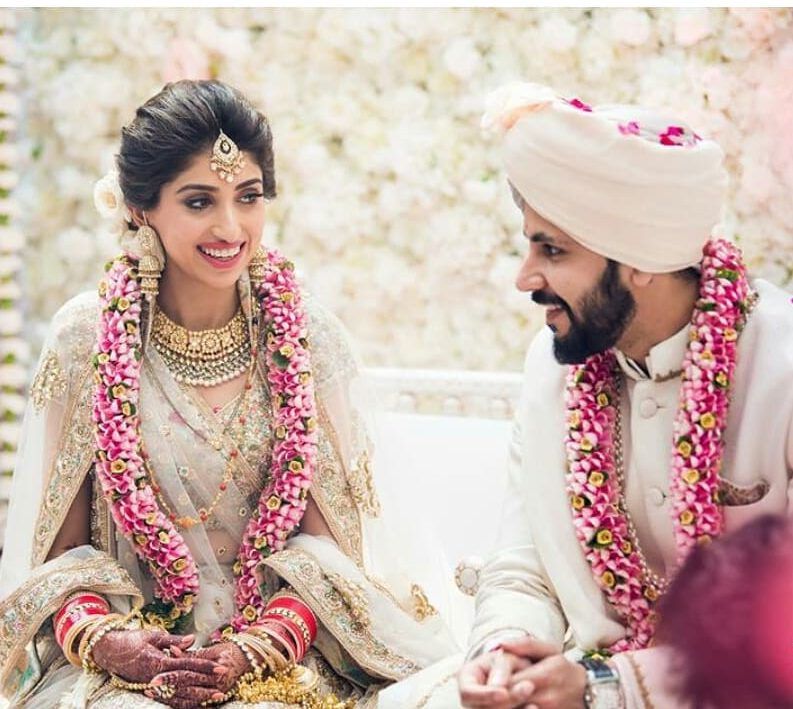
Varmala is a traditional Hindu wedding ceremony in which the bride and groom exchange flower garlands. The word "Varmala" comes from two Hindi words "var" meaning "flower" and "mala" meaning "garland". The exchange of Varmalas symbolizes the union of the bride and groom and their acceptance of each other as life partners.
The Varmala ceremony is usually performed after the Jaimala ceremony and before the main wedding ceremony. During the Varmala ceremony, the bride and groom stand facing each other, and they exchange flower garlands while the guests shower them with flower petals. The exchange of Varmalas is a very important and significant moment in the Hindu wedding and is considered to be an auspicious start to the wedding celebrations.
The Varmala ceremony is a time for the bride and groom to express their love and affection for each other and to show their commitment to each other as life partners. It is also a time for the families of the bride and groom to come together to celebrate and give their blessings to the couple.
Overall, the Varmala ceremony is a vibrant and joyous moment in the Hindu wedding, and it is an important part of the wedding celebrations, symbolizing the start of a new journey for the bride and groom as they embark on their life together.
VIDAII

Vidaai is a Hindu wedding ritual that marks the end of the wedding ceremonies and symbolizes the bride's departure from her parents' home and the start of her new life with her husband and in-laws.
In the Vidaai ceremony, the bride says goodbye to her parents and other family members, and leaves her childhood home to join her husband's family. The bride is accompanied by her husband, close relatives, and friends, who offer their blessings and support as she begins this new chapter in her life.
The Vidaai ceremony is an emotional moment for both the bride and her family, and is often marked by tears and expressions of love and gratitude. The bride may receive gifts or blessings from her parents, and may also be given a traditional farewell song or poem.
The Vidaai ceremony is considered to be an important part of the Hindu wedding tradition, and is a time for the bride to reflect on her childhood, to express gratitude to her parents and family, and to embrace her new life as a wife. The Vidaai ceremony is also a time for the groom's family to welcome the bride and to extend their love and support to her as she becomes a part of their family.